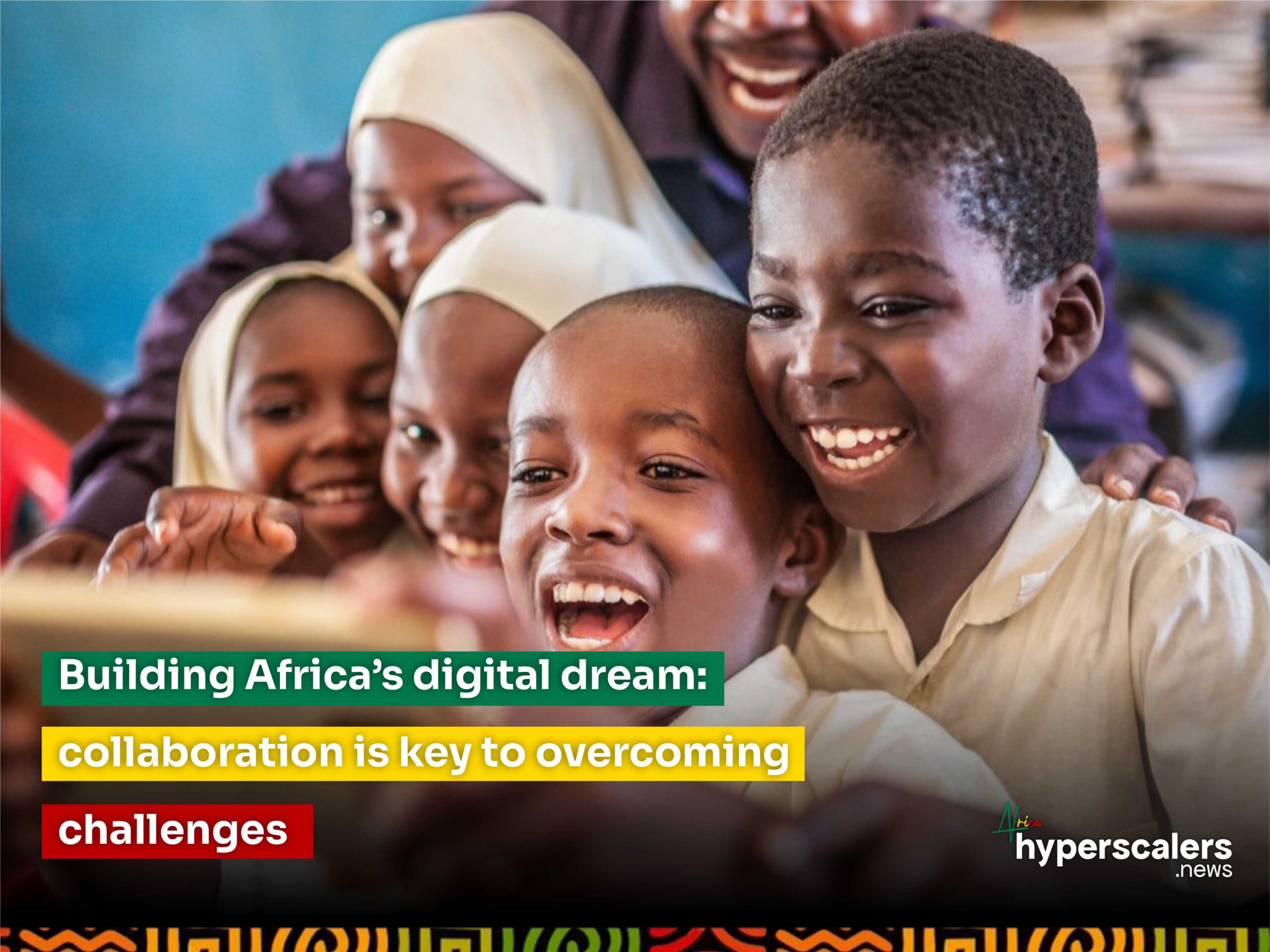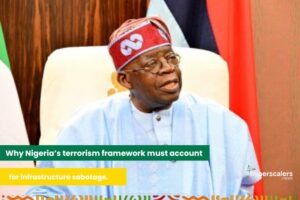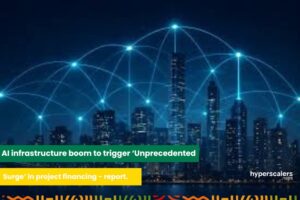At the recent Africa Technology Festival in Cape Town, the theme of collaboration echoed louder than the keynote speeches themselves. Yet, despite its frequent use, collaboration in Africa’s digital transformation remains more aspirational than actionable. From telecom operators to governments and financial institutions, every panel – even at our Africa Hyperscalers conference in September – seems to chant the same refrain—work together. And while this idea is essential, it’s hard to ignore that, despite years of talk, real collaboration across sectors is still lacking.
The eternal conundrum is how laying the huge capacity subsea cables – a more complex endeavor due to its significant engineering, regulatory coordination across multiple countries and continents, and financial investment – has been completed, yet at the national level, bottlenecks persist and seem to be growing daily. It’s as if the biggest obstacle to Africa’s digital future isn’t the physical connections between countries or its funding, but the stubborn refusal to cut through regulatory red tape, turf wars, and fragmented coordination. The digital divide continues to widen because we haven’t yet tackled the complex barriers that slow progress on the ground.
The persistent barriers to connectivity
Africa’s digital future still hinges on overcoming its connectivity challenges. While mobile broadband growth has been impressive over the past decade, it has slowed significantly in the last year. In fact, according to the International Telecommunication Union (ITU), only 37% of Sub-Saharan Africans had access to the internet in 2023. This is a major roadblock, particularly as mobile phone use is widespread, yet vast portions of the population remain excluded from the digital economy, with profound implications for access to education, healthcare, financial services, and economic opportunities.
While we’ve seen remarkable advancements in technology, the gap in infrastructure remains significant – especially in rural areas where access is limited or non-existent. High infrastructure costs (now further strained by currency fluctuations), complex and delayed licensing, and expensive right-of-way fees continue to stifle progress. These regulatory bottlenecks make it difficult to extend connectivity to unserved and underserved regions, and national policies often conflict, hindering cross-border cooperation and slowing rollout. In many cases, telecom operators are still acting independently, investing redundantly in commercially viable areas while neglecting other zones that are in desperate need of infrastructure.
At the same time, the digital literacy gap is growing, cybersecurity risks loom large, and financing remains sluggish. While telecoms are making significant strides, funders are adopting a “wait-and-see” approach, which only prolongs Africa’s digital transformation. These challenges must be addressed head-on if we are to unlock Africa’s digital potential.
Overcoming infrastructure and regulatory hurdles
One of the most pressing issues hindering the expansion of telecommunications infrastructure in Africa is the fragmented regulatory environment. Telecom operators must navigate inconsistent and complex regulations from country to country, which increases costs and delays infrastructure deployment. Even securing the permits to lay fiber optic cables or build towers can be a slow and bureaucratic process, interrupted by demands not only by government officials but also by community leaders and area boys.
It is hard to build infrastructure in many African countries by design. Governments, both at the executive and legislative levels, have an important role to play in easing these challenges. They must create policies that encourage investment, streamline regulations, and facilitate collaboration to close the infrastructure gaps, especially in underserved areas. Governments must understand that infrastructure is not just about roads and bridges; digital infrastructure—especially broadband and mobile networks—is the modern backbone of any economy. This includes not only access to information but also the ability to participate in the global economy, access education and healthcare services, and improve livelihoods. Legislators and policymakers must work together to create enabling environments that encourage private investment, simplify licensing and approval processes, and incentivize infrastructure rollout in underserved areas. Without a clear vision and proactive policy support, the digital divide will only widen, leaving millions of people on the wrong side of economic and social opportunities.
However, it’s not enough to simply build infrastructure. The benefits of digital access need to be clearly communicated to all stakeholders – governments, telecom operators, and citizens. Digital infrastructure isn’t just about connectivity; it’s a pathway to economic growth, improved healthcare, education, and job creation. Governments must understand that supporting digital access is key to unlocking these opportunities and driving national development.
Telecom operators also have a key role in raising awareness about the dangers of digital exclusion. While progress has been made in expanding services, more needs to be done to highlight the risks of leaving people behind in an increasingly digital world. Exclusion from the digital economy means limited access to education, job opportunities, and essential services, which can entrench inequality. Bridging the digital divide is not only an economic concern; it is a social justice issue preventing people from fully participating in society and the economy.
By creating policies that promote infrastructure sharing and improve regulatory coherence, they can help reduce costs and accelerate deployment. Encouraging collaboration between governments and telecom operators to share resources—such as towers and fiber networks—can ensure broader coverage and lower infrastructure costs, particularly in rural regions.
Examples from across the continent show the promise of such collaboration. In Ghana, the government has successfully promoted open-access networks for fiber, which has reduced duplication and improved efficiency. The rollout of 5G also benefits from policies that encourage telecom operators to share infrastructure. Similarly, at the just-concluded AfricaTech Festival, Solomon Richardson of Ghana’s National Information Technology Agency shared how the government has worked to ensure that rural areas are included in the digital infrastructure agenda by installing core networks and reducing licensing fees for wholesale networks.
Regional frameworks like those created by the Economic Community of West African States (ECOWAS) can also help address shared connectivity challenges, such as equipment supply and subsea cable resilience. This kind of multi-country strategy can break down barriers to rural connectivity and help scale infrastructure across borders.
Collaboration for financial inclusion
Access to financial services is another area where collaboration can make a transformative impact. Over 66% of adults in Sub-Saharan Africa remain unbanked, with rural populations particularly excluded from formal financial systems. Limited access to documentation, physical bank branches, and credit services contributes to this exclusion, trapping many in a cycle of poverty.
Telecom companies, with their extensive customer bases and access to valuable data, are uniquely positioned to help bridge this gap. By partnering with financial institutions, telecom operators can leverage mobile money platforms to offer services like savings, credit, and insurance to the unbanked. Kenya’s M-Pesa is a prime example of how collaboration between telecoms and financial institutions can open up banking services to millions for the first time. Through mobile money, individuals can save, transfer funds, and even access micro-loans, making significant strides toward financial inclusion.
This collaboration could be further enhanced by incorporating mobile data to assess creditworthiness. Financial institutions could use this data to extend microloans to individuals who lack traditional credit histories, helping them break free from poverty and gain access to essential services. For Africa to make real progress, telecom operators and financial institutions must scale these services across the continent.
The need for investment in digital infrastructure
One key factor limiting the pace of infrastructure expansion is the high cost of building both terrestrial and subsea networks. Laying fiber-optic cables, building cell towers, and establishing data centers all require substantial capital investment. Many of the underserved areas lack the population density or economic incentives that would make these investments immediately profitable for telecom operators. This results in slow or patchy rollout, leaving large swathes of the population disconnected from the global digital economy.
To address these gaps, innovative solutions are needed to complement traditional infrastructure. One promising development is the rise of Low-Earth Orbit (LEO) satellite networks, such as Starlink (backed by SpaceX) and Amazon’s Kuiper Project. These satellite initiatives have the potential to provide internet access in remote and rural regions, where the challenges of building terrestrial infrastructure – such as rough terrain, low population density, or high construction costs – make traditional approaches difficult or economically unfeasible. LEO satellites, which orbit closer to the Earth than traditional geostationary satellites, can deliver high-speed internet with low latency, making them a game-changer for underserved areas. It does not matter if a cat is black or white: as long as it catches mice, it’s a good cat. We have to be pragmatic in deploying the most efficient backhaul to connect people.
Regulatory coordination is key
Regulatory alignment is key to enabling effective collaboration. Policymakers must create frameworks that facilitate cooperation between the public and private sectors. Streamlining licensing processes, reducing fees, and fostering an environment where collaboration is incentivized will help break down the regulatory barriers that hinder growth.
At the AfricaTech Festival, many highlighted the importance of public-private partnerships in building the necessary infrastructure for Africa’s digital future. For instance, Funke Opeke, Managing Director of MainOne, emphasized the need for streamlined regulations to enable further investment in critical infrastructure. By creating the right environment, regulators can help catalyze growth and development.
A stronger digital ecosystem for economic growth
Investing in digital infrastructure creates jobs, not only in the tech sector but across various industries that rely on digital tools, such as education, healthcare, and finance. The collaboration between MainOne, Lagos State Government, and the Co-Creation Hub to roll out fiber in the Yaba area is a great example. This initiative played a part in fostering the development of Nigeria’s tech ecosystem, helping launch several successful startups, including Andela, and has contributed to Lagos’s emergence as Africa’s startup capital, and boosting ICT’s contribution to GDP.’
Aside from the economic outcomes, a strong digital infrastructure enhances access to critical services such as education, healthcare, and government services. Telemedicine, online education, and digital platforms for government services can all improve the quality of life and make essential services more accessible. This, in turn, strengthens Africa’s digital economy, transforming infrastructure into a catalyst for broad-based development.
For Africa to overcome its connectivity and financial inclusion challenges, collaboration is essential. By working together—across governments, telecom operators, and financial institutions—the continent can streamline regulations, share infrastructure, and leverage data to unlock its digital potential. The African digital revolution isn’t just about building more infrastructure; it’s about fostering partnerships that drive economic growth, improve access to services, and empower individuals across the continent. With the right collaboration, Africa can bridge the digital divide and emerge as a global leader in the digital economy.





